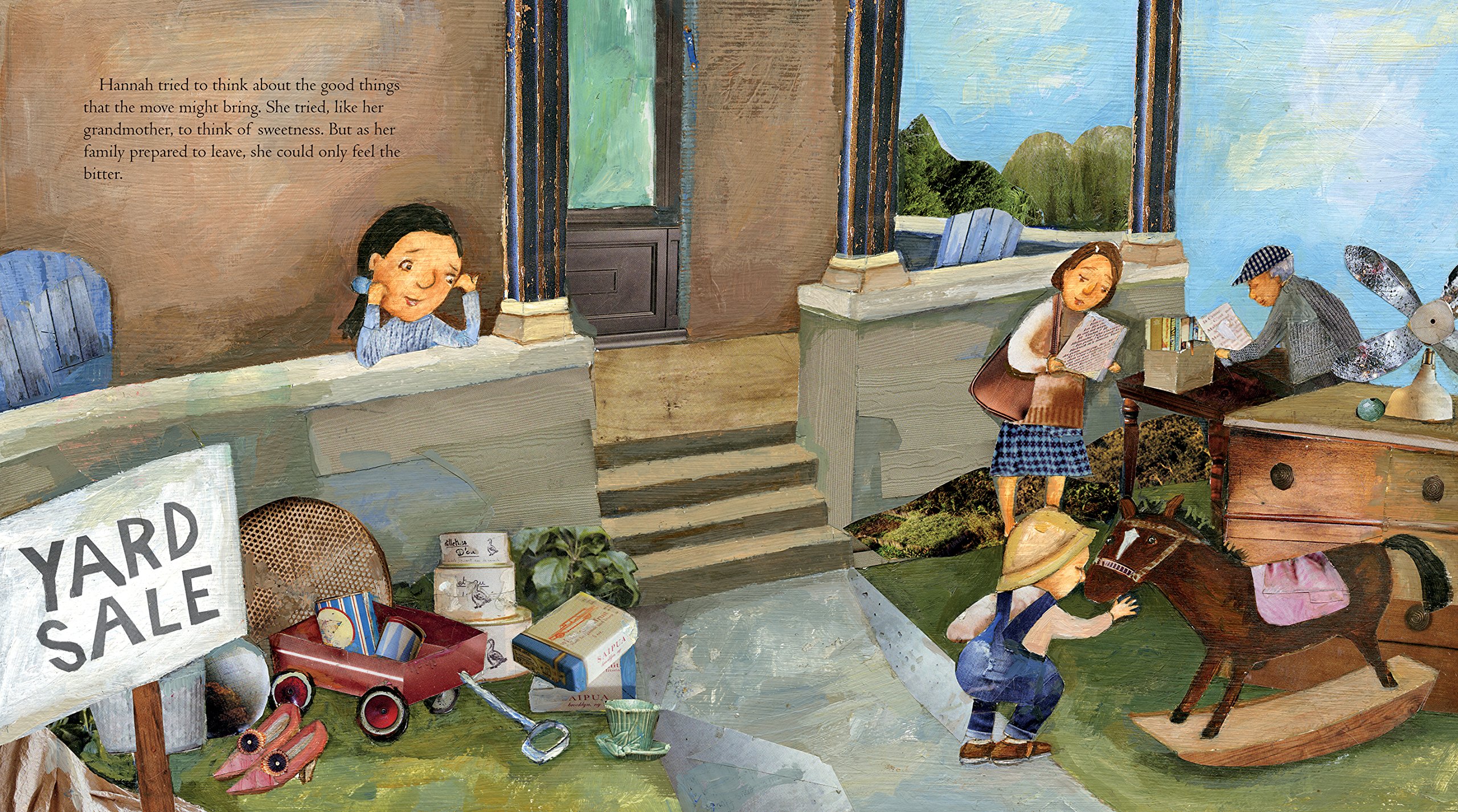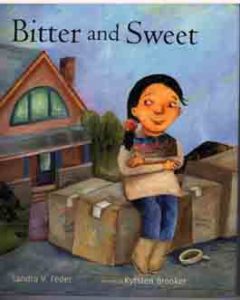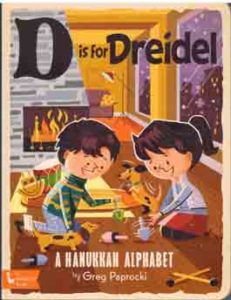[AMAZONPRODUCTS asin=”1554989957″]
Author Sandra Feder notes that Judaism acknowledges a duality in life: with the bitter often will come the sweet, and vice versa. “Sweet wine or grape juice is used to welcome Shabbat on Friday nights, and at Rosh Hashanah apples are dipped in honey for a sweet New Year. At the same time, Judaism does not shy away from acknowledging the difficulties of life. During the Passover Seder, even as the joy of freedom is being celebrate, bitter herbs are eaten to remind all of the bitterness of slavery. At the end of a beautiful wedding, the groom breaks a glass as a reminder both of the destruction of the Temple in Jerusalem and the fragility of love…”
In this story, for students of elementary school age, Hannah feels the bitterness of moving away from her old neighborhood. She has to say goodbye to friends, to her familiar room, to the big porch of her house, and to the familiar landscape of her city. Her bubbe reminds her that she and zaide once moved to the United States from Europe, where so many things were different. But eventually she found sweetness, and so too will Hannah.
On arrival in the new city, Hannah was not so sure. The porch of her new house was smaller, and the hills seemingly too hilly for bike riding. As Shabbat approached, her mother lit candles and Hannah “was surprised by how nice the new house looked in the soft light.” She drank the sweet grape juice, and wondered whether her life could be as sweet. The next morning the answer came in the form of Maya, a girl that lived down the street. As a welcome present, she brought some cocoa powder. Later, Hannah heated up some milk, added the cocoa powder, and ugggh, the hot chocolate was bitter. At school, Maya raced to tell Hannah that she forgot to tell her that the powder should be mixed with sugar before it is added to the milk. Bitter and sweet together made a wonderful cup of hot chocolate.
Hannah and her new friend drank the hot chocolate together, on the porch.
In illustrating this story, Brooker was attentive to details of the Jewish home. Zaide wears a yarmulke, and bubbe a babushka for their trip across the Atlantic Ocean. At the family’s Shabbat table, the challah has been carefully covered. When Hannah greets Maya at her door, the mezuzah on the door post is prominent.
[AMAZONPRODUCTS asin=”1423650387″]
Unlike the previous story, in this book for preschoolers, everything is sweet, nothing is bitter. On hard cardboard pages, the letters of the alphabet represent alphabet, blessing, candles, dreidel, eight days, festival of lights, gelt, hanukkah, Israel, jelly doughnut, kinship, latke, menorah, noodles, oil, prayer, questions, rabbi, synagogue, tradition, unison, visitors, wrapping paper, (e)xcited; yontiff, and zaide. Hannukah is pictured as a winter celebration with lots of gift giving, not much different from Christmas (although that holiday is never mentioned.)
Missing from the alphabetical story are J–Judah Maccabee– or perhaps M-Maccabees. Although there is a synagogue, there is no T-Temple, which had to be rededicated after it was profaned by the Romans. In other words, this is a sanitized version of Hannukah, without conflict, or as author Sandra Feder put it in the previous book, without anything that is “bitter.”
One assumes that this presupposes that the children to whom this book will be read are too young for the real Hannukah story; it is enough to expose them to the sweetness of the holiday. There’s plenty of time in their lives for the bitter.
The illustrations tell an interesting story. B-Blessing pictures a father wearing a yarmulke holding a baby, while the mother looks on with delight. C-candles burn in a hannukiah while D-dreidel is played on the floor (see the illustration) Paper dreidels are strung in the window. F-Festival of llghts pictures three hannukiot in the same room, along with a variety of single candles. G-gelt shows the children running wild in the living room, one even climbing on the furniture. I-Israel pictures high rises among buildings that appear to be a mixture of synagogues, churches and mosques, although none is so identified. K-kinship has men and women sitting together in a prayer service; clearly not Orthodox. R-Rabbi is a woman who holds the hand of a little girl. S-Synagogue shows people wearing ear muffs as they pass it; evidently it is located in a cold climate. U-Unison pictures a family singing together; you might even think that “I had a little dreidel” is a carol. W-wrapping paper, (e)X-Excited and Y-Yontiff all depict gift giving. The bearded man with a black hat, who is greeting the family a “good yontiff” carries a blue gift box under his arm.
Republished from San Diego Jewish World




























